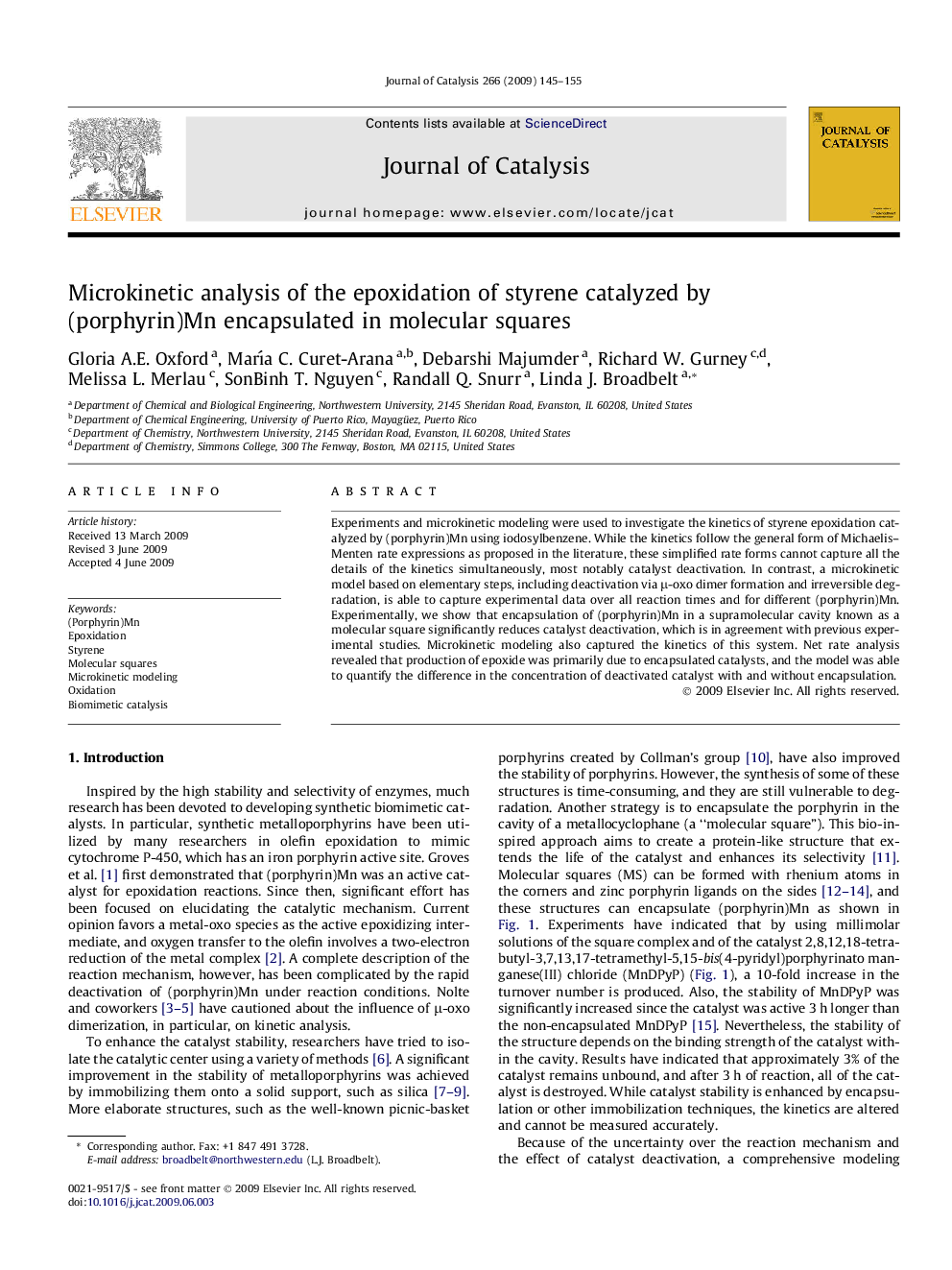| Article ID | Journal | Published Year | Pages | File Type |
|---|---|---|---|---|
| 62109 | Journal of Catalysis | 2009 | 11 Pages |
Experiments and microkinetic modeling were used to investigate the kinetics of styrene epoxidation catalyzed by (porphyrin)Mn using iodosylbenzene. While the kinetics follow the general form of Michaelis–Menten rate expressions as proposed in the literature, these simplified rate forms cannot capture all the details of the kinetics simultaneously, most notably catalyst deactivation. In contrast, a microkinetic model based on elementary steps, including deactivation via μ-oxo dimer formation and irreversible degradation, is able to capture experimental data over all reaction times and for different (porphyrin)Mn. Experimentally, we show that encapsulation of (porphyrin)Mn in a supramolecular cavity known as a molecular square significantly reduces catalyst deactivation, which is in agreement with previous experimental studies. Microkinetic modeling also captured the kinetics of this system. Net rate analysis revealed that production of epoxide was primarily due to encapsulated catalysts, and the model was able to quantify the difference in the concentration of deactivated catalyst with and without encapsulation.
Graphical abstractMicrokinetic modeling showed that deactivation of (porphyrin)Mn catalysts adds significant complexity to the reaction kinetics. (Porphyrin)Mn catalysts encapsulated in molecular squares prevented deactivation of the catalyst, and were found to be the primary catalytic species in this system.Figure optionsDownload full-size imageDownload high-quality image (63 K)Download as PowerPoint slide
